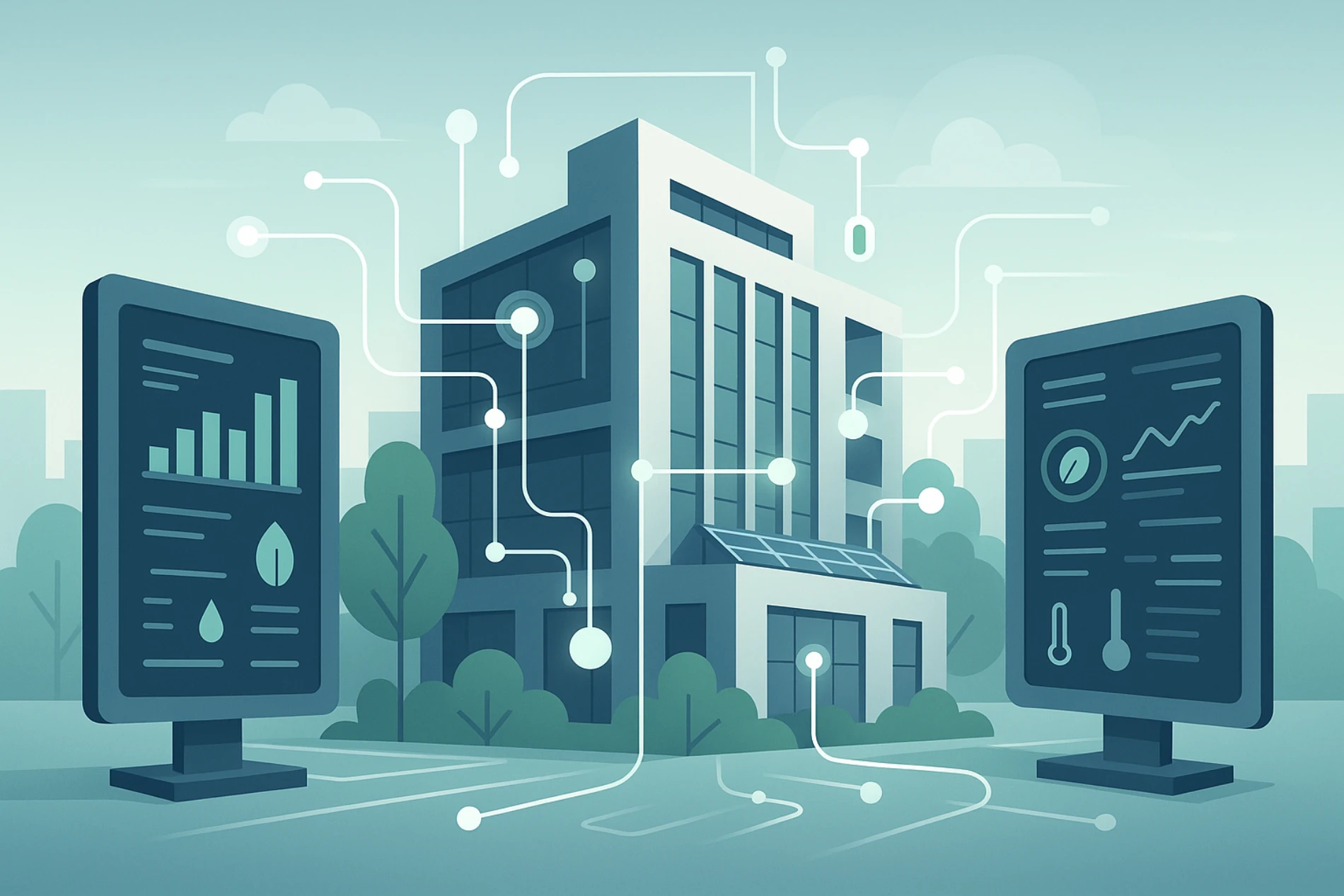Building Management Systems (BMS) have become indispensable tools for optimizing energy consumption in tertiary buildings. In the face of new energy regulations, such as the BACS Decree and the Tertiary Decree, companies must quickly adapt to improve their energy efficiency while complying with legal obligations.
1. What is a Building Management System (BMS)?
A BMS is an integrated system that allows for the centralized management of a building’s technical installations, including heating, ventilation, air conditioning (HVAC), lighting, and other systems. By collecting and analyzing data from various sensors and devices, a BMS enables real-time monitoring and control, leading to enhanced energy efficiency and occupant comfort.
Benefits of Implementing a BMS
- Energy Savings: A well-implemented BMS can lead to significant energy savings by optimizing the operation of technical systems based on actual usage and occupancy patterns
- Regulatory Compliance: With regulations like the BACS Decree mandating the installation of automation and control systems in certain buildings, a BMS helps ensure compliance and avoid potential penalties.
- Improved Maintenance: By providing detailed insights into system performance, a BMS facilitates predictive maintenance, reducing downtime and extending equipment lifespan.
- Enhanced Comfort: Optimizing environmental conditions such as temperature and lighting improves occupant comfort and productivity.
Energisme’s Approach to BMS
Energisme offers advanced solutions for intelligent energy management, assisting businesses and local authorities in optimizing their energy consumption, reducing costs, and lowering their carbon footprint. Their platform integrates seamlessly with existing BMS infrastructures, providing enhanced data analytics, real-time monitoring, and actionable insights to drive energy performance improvements.
